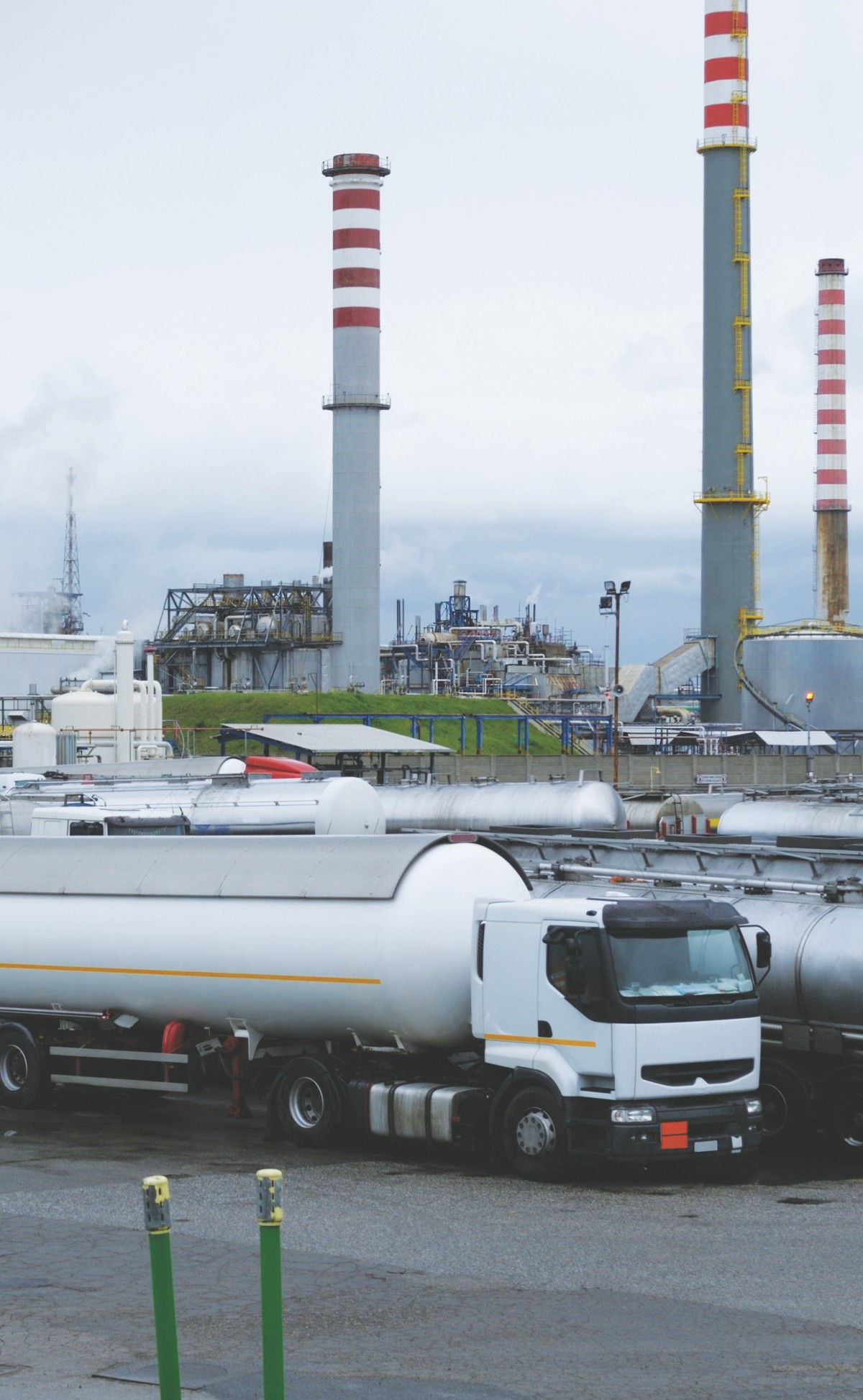The journey of fuel is plagued by contaminants
No matter what industry you operate in — downtime costs you big time. You want to minimize unscheduled downtime every way you can, and sometimes that means looking in unexpected places for trouble spots.
Like your diesel supply.
Every gallon of diesel fuel is plagued by potential contamination. Diesel that isn’t "pristinely clean" (meaning clean on a microscopic level) can wreak havoc on expensive high-pressure common rail (HPCR) engines. HPCR fuel systems used in today’s low-emission diesel engines deliver much better efficiency, but due to smaller tolerances at the injector, they are more susceptible to failure compared to older-model engines. Before the rollout of HPCR engines, "clear and bright" was a standard for fuel cleanliness. You could literally do a visual inspection of your fuel and be confident that it was safe for your engine.

Today’s systems are much more susceptible to damage from contaminants you can’t see with the naked eye. Did you know your eye can only see particles that are at least 40 microns in size? And did you know that the particles that can damage HPCR injectors are only 2 microns in size? That’s the size of bacteria. Fuel quality issues, including dirt, typically show up as reduced fuel economy, higher rate of diesel particulate filter (DPF) regenerations, prematurely plugged on-engine fuel filters, loss of horsepower and DPF failure and — ultimately — fuel system failure.
In most off-road industries, an engine or fuel injector failure is a worst-case scenario. Replacing or repairing an engine is one of the most costly equipment-related issues possible. In mining, however, a haul truck or loader being offline for several days can also result in unrecoverable costs. Even a few hours of lost production can add up.
Know your problem points




As diesel travels from refinery to terminal locations to local bulk storage and finally to your bulk tank, it picks up contamination that is deadly to today's engines.
The question then becomes, "How do you keep diesel 'clean' for engines with newer, more advanced technology?" The short answer is “filtration.” But to better understand this answer, you need to better understand all the places along its journey from refinery to your vehicles’ tanks that fuel can become contaminated. Knowing your problem spots will help you protect your supply.
"Because most HPCR engines feature tolerances of less than 2 microns," says Paul Klick, Global Sales Manager at Donaldson, Inc., "dirt particles that are as small as bacteria can cause pitting and, eventually, injector damage. People can transmit bacteria with a sneeze or a touch, so you can imagine how a simple fuel transfer in a dirty environment can introduce all sorts of trouble to a diesel supply."
Fuel, in its final state, leaves the refinery by truck, rail, barge or pipeline. In most cases, there’s a transfer during this stage — each part of the transportation cycle allows for contamination. There are specifications in place for the handling and management of diesel fuel, but they were implemented in the 1950s and simply haven’t kept up with the technology requirements in today’s HPCR engines.
Then there is a transfer when the fuel arrives at the bulk terminal.
This is another opportunity for dirt, water and chemistry issues to invade the fuel supply. We’ll talk about bulk tank storage in a little while, but for now, remember that in this case, the transfer is only one of the possible sources of contamination.
Diesel is delivered from the bulk terminal by truck to the end-user site, where it is transferred to on-site storage. That’s one “out” and one “in” transfer. Two more opportunities for dirt ingression. Once it’s in “final” storage on site, the fuel can then be transferred to smaller day-tanks, mobile fueling trucks or dispensed directly into equipment. The potential for contamination is highest here.
Every single time fuel is moved, contamination is possible.
"Local distributors have federal cleanliness standards that they must meet, and most do," says Klick. "The problem is that our industry regulatory standards have not kept pace with the requirements of our engines. A fuel-jobber can be doing their due diligence the same way we have always done it, but now the fuel is too dirty for newer engines on the lot."
Problems in bulk
At this point, we’ve only discussed the potential for picking up contamination during transfer. But equally problematic, if not more so, are the final fuel tanks themselves. Bulk fuel tanks are contamination hot spots. Dust can enter through exhaust vents. Every time fuel is pumped in or out of a bulk tank, you can churn up sediment or other gunk that’s been resting on the bottom. And it can go right into your equipment.
And moisture is diesel’s worst enemy. If water gets into that bulk tank, it can cause rust on the inside of the tank. If enough moisture gets in, bacteria can begin to grow by feeding off the fuel. Additionally, water makes biodiesel unstable and can cause glycerin fallout, which can clog bulk and onboard filtration. Free water in diesel can cause corrosion, etching or channeling of the injector sealing face, and even make injector tips blow off.
The answer is filtration
"Nothing is foolproof, but effective filtration goes a long way in protecting your engine," Klick says. "Today’s advanced filtration media is designed to protect engines beyond current industry standards. We obviously recommend high-efficiency onboard filtration, but you can’t overlook proper filtration on every external tank you have too."
Proper filtration includes inlet filtration, breather filtration on the tank’s venting system, and every dispense pump should be outfitted with a good particulate filter and water-absorbing technology.



By removing dirt, water and other contamination before your fuel ever touches your equipment, you'll elimnate costly unplanned downtime, Keep Running and Achieve More.
Whether onboard or off, it’s important to remember that not all diesel filters are created equal. Some are capable of removing only (literally) rocks, while others remove more than 99.9% of all contaminants that can harm modern HPCR engines. Bottom line: It is important to use a filter that will clean diesel to the recommended levels the engine requires.
"Our customers often operate their equipment in harsh environments," Klick says. "The best thing you can do to keep your equipment running is to make sure that your fuel is as clean as possible."



